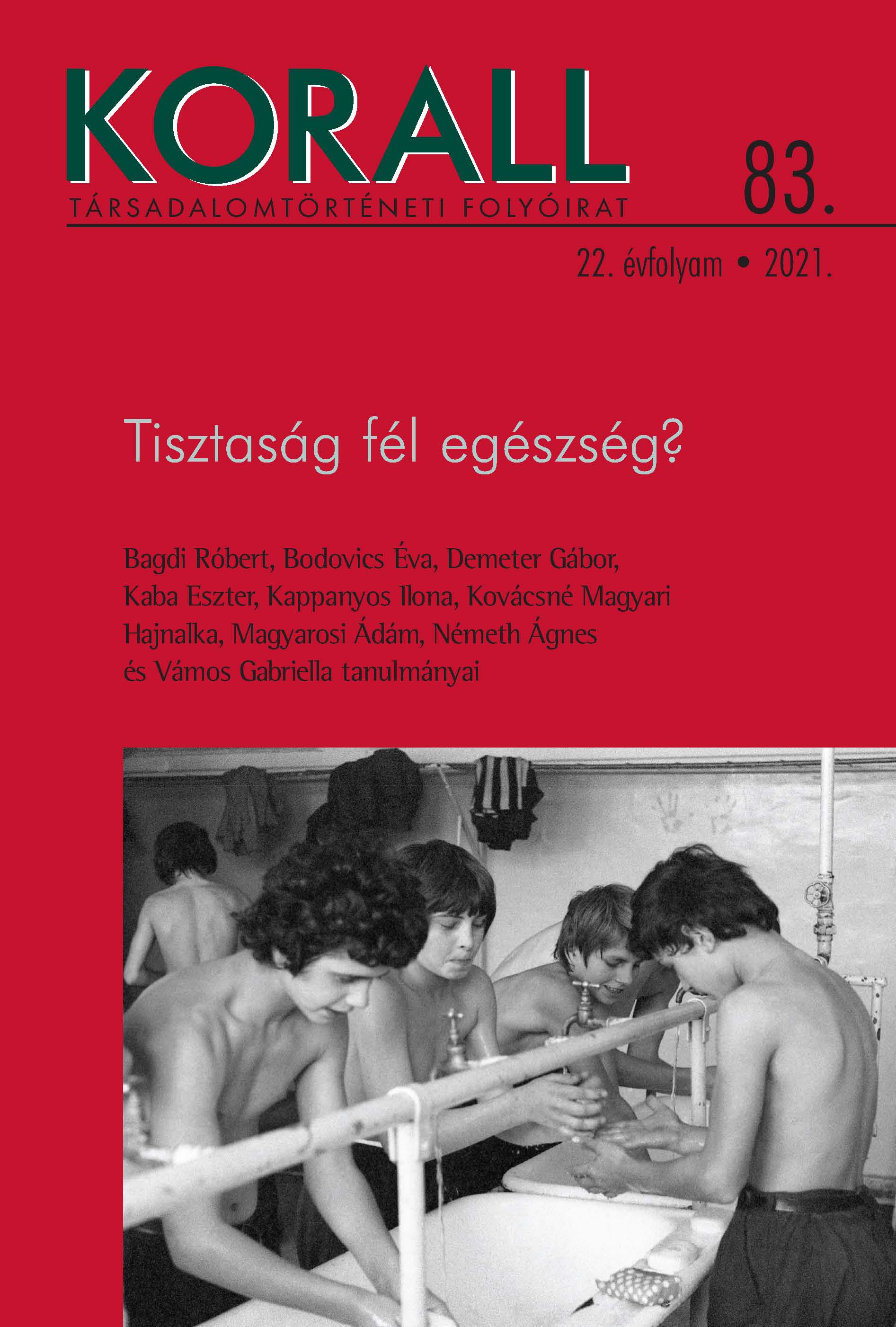Tuberkulózis, tetű és pöcegödör
Tuberculosis, Lice, and Night-Soil
Schoolchildren's Health, and Living Conditions in the Greater Debrecen Area during the Great Depression
Author(s): Gábor Demeter, Ádám Magyarosi, Róbert BagdiSubject(s): History, Local History / Microhistory, Social history
Published by: KORALL Társadalomtörténeti Egyesület
Keywords: hungary;tuberculosis;health;
Summary/Abstract: What is the social historical relevance of a 1931 health survey targeting the “marginal social group” of children? This kind of data can prove to be a treasure trove if it goes beyond the simple record of the prevailing methods of medical diagnosis and physical condition, and enables the researcher to compare health status with other variables, such as comparing social, religious, regional groups or their broader social and political background. To some extent, Debrecen clinician Ede Neuber’s survey, undertaken between 1930 and 1937, makes this possible. Moreover, since he expanded the original “medical registry” of elementary school students to university students, and later to the children of the elite families of Hajdú County, comparative analysis is possible. The reason for the breadth of Neuber’s data collection was that he specifically designed the survey to fight tuberculosis and syphilis, with the broader aim of optimalising human resources.This was the broadest, non-governmental initative between the world wars, which eventually received governmental support as well. Data from altogether ten thousand elementary school students, three thousand university students, and 947 children from elite families was collected – unfortunately not in consistent detail. Neuber recorded with relative consistency the health status as well as data revealing social background (parent’s occupation), personal hygiene (lice, fleas, unwashed body), living conditions (size of dwelling, number of beds, size of family, quality of water supply and sewage removal, material and dampness of flooring, number and size of windows, access to yard or garden). This allows the comparative analysis of various segments of Debrecen elementary students (two-years’ cohort of 3500 students between 1930 and 1932) in relation with their living conditions, determined by the parents’ social status, religion, occupation or the infrastructure of their residence (residential or school district).
Journal: Korall - Társadalomtörténeti folyóirat
- Issue Year: 2021
- Issue No: 83
- Page Range: 105-135
- Page Count: 31
- Language: Hungarian
- Content File-PDF

